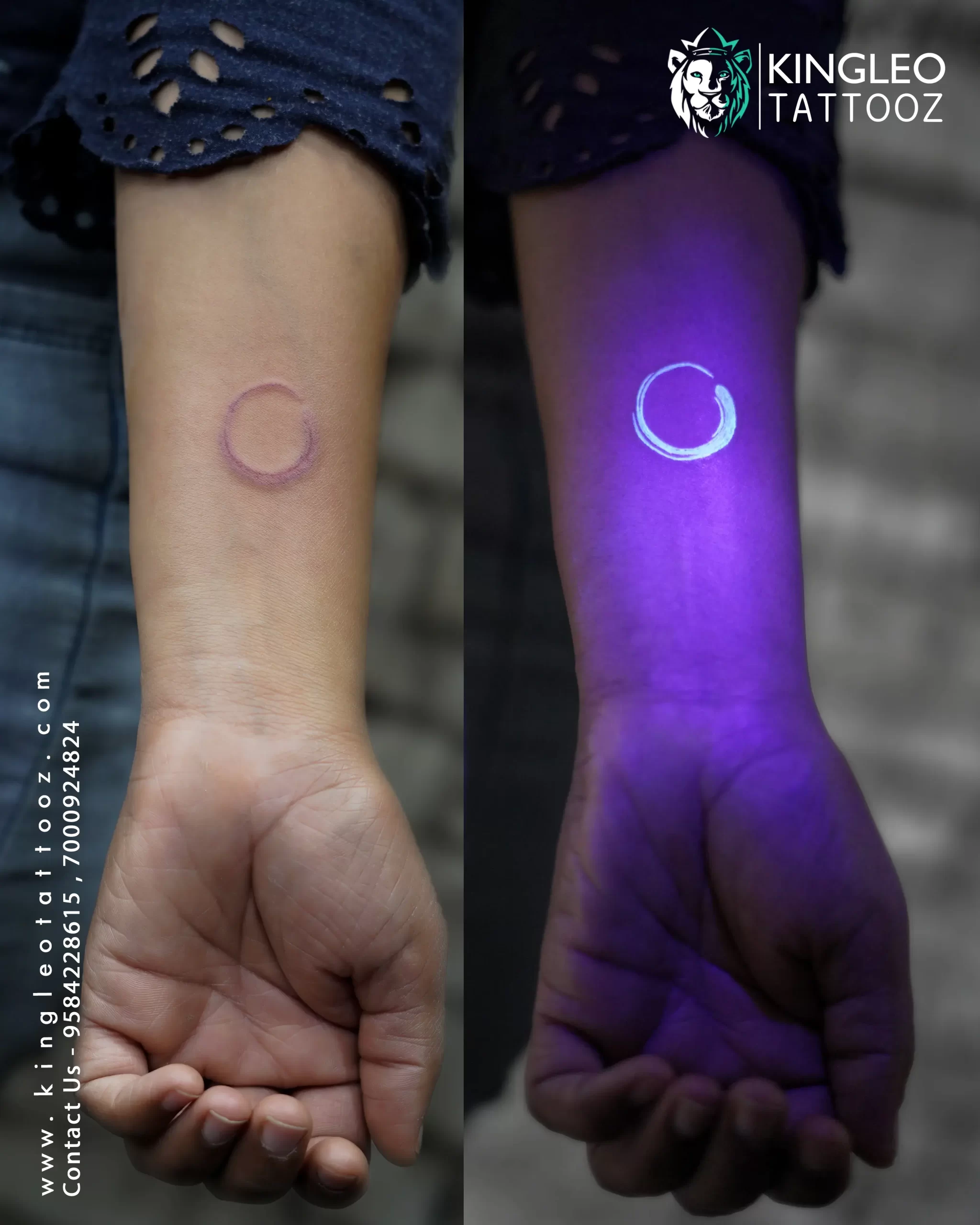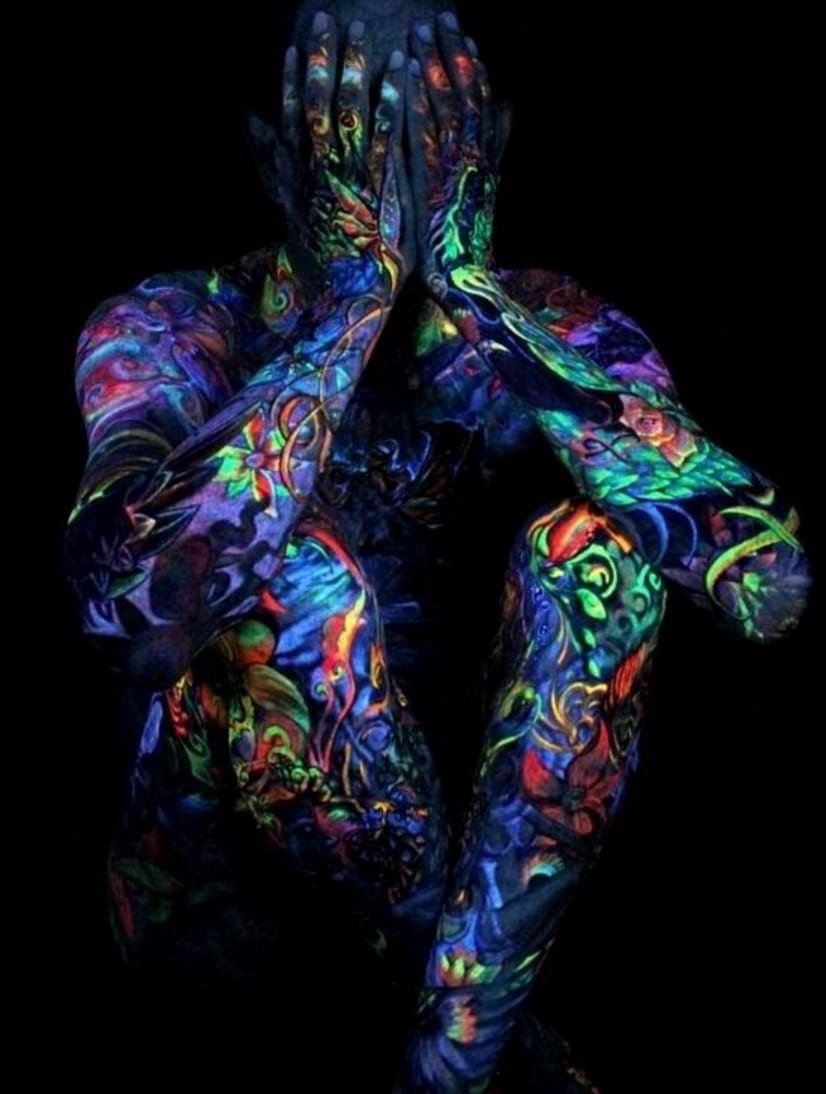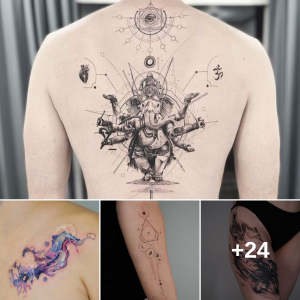UV tattoos use a fluorescent dye, which means the tattoo only appears under UV light. There is little evidence on whether UV tattoos are safe for human skin.
UV tattoos, also known as black light tattoos, are invisible under regular lighting and only appear under UV light due to the fluorescent compounds within the ink.

There is no regulation over UV tattoos, so there may be some potential health risks, depending on the ink’s chemicals. UV tattoos will also require similar aftercare to regular tattoos.
This article discusses UV tattoos, safety and possible side effects, aftercare, and how a person can find a reputable tattoo artist.
 Share on Pinterest
Share on PinterestUltraviolet (UV), black light, or glow-in-the-dark tattoos are tattoos that only appear under UV light.
UV tattoos use ink containingTrusted Source a fluorescent dye that responds to UV light. This means the tattoo is invisible to the human eye in regular lighting and is only visible under UV, or black light.

There is little scientific evidence on the safety of UV tattoos for humans. The Food and Drug Administration (FDA)Trusted Source does not currently regulate any tattoo inks, including UV inks.
According to Tattoo Health, the only approved use for UV ink is within the agriculture and fishing industries. There have also been more reports of adverse skin reactions to UV ink than regular tattoo ink.
Some UV ink tattoos may contain phosphorous, which may cause side effects such as:

- severe blistering
- pain
- burning sensation
- skin rashes
There is also some concern that UV tattoo inks may contain carcinogenic compounds, which means there may be a potential cancer risk.
As awareness increases about the risks of phosphorous, fewer tattoo artists may be using inks containing the substance, but there is no regulation to ensure this.
Other UV inks may contain nontoxic compounds that react to UV light. Even without phosphorus, people may still experience negative side effects on the skin.
A 2016 studyTrusted Source, looking at the use of tattoos in breast radiotherapy, used a commercially available UV tattoo ink. The dye contained a nontoxic, fluorescent compound called 7-diethylamino-4-methylcoumarin (coumarin 1). Researchers found no reports of skin toxicity from the tattoos or any reports of the tattoos becoming visible in regular lighting in a 2-year follow-up.

Black light emits a UV light that the human eye is unable to see.
UV tattoos contain a fluorescent substance that absorbs UV light during exposure to black light and then emits it at a wavelength visible to humans.
This means UV tattoos are invisible under regular lighting but appear to glow under UV light.

There is limited information on UV tattoos, but some anecdotal sources suggest they last as long as regular tattoos.
ResearchTrusted Source suggests that UV tattoos may last a lifetime, but this could depend on tattoo exposure to UV light.
According to Tattoo Health, people can opt for UV tattoo removal in the same way as regular tattoos. People may choose laser tattoo removal, which breaks up the ink to remove it from the skin.
UV tattoos may have an increased risk of adverse side effects than regular tattoos. They may cause skin irritation, such as:
- rash
- burning sensation
- blistering
- infections
- pain
Some UV inks may also contain carcinogenic compounds.

Side effects and complications of any tattoo may includeTrusted Source:
- infections from contaminated equipment or ink, or unhygienic practices
- severe infections may cause fever and chills and may require treatment with antibiotics
- allergic reaction, which may persist due to the permanence of the ink
- rash, redness, or bumps around the tattoo
- scar tissue or keloids
- reaction to MRI scans, which may result in swelling or a burning sensation, although this is rare and a temporary reaction




